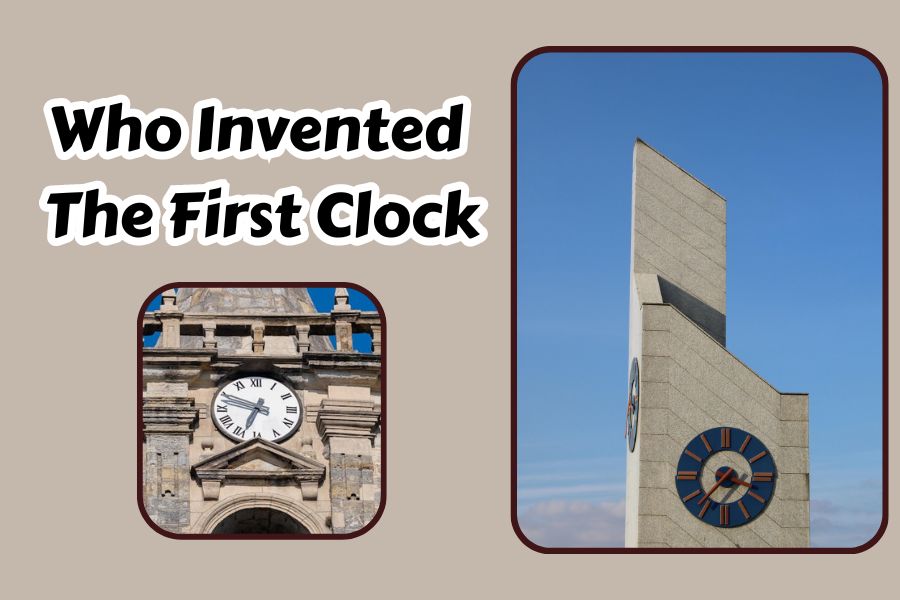The relentless march of time has always fascinated humanity, prompting the invention of countless devices to measure its passage. Among these, the clock stands as a paramount invention, a cornerstone in the edifice of human civilization. Tracing its origins back to the ancient methods of timekeeping, from sundials to water clocks, the journey to the first mechanical clock is a testament to human ingenuity and the relentless pursuit of precision. This article embarks on a voyage through time, exploring the inception of the first clock, its inventors, and the evolutionary leap it represented in our ability to segment and standardize the essence of time. As we delve into the historical tapestry of this remarkable invention, we uncover the mechanics of timekeeping and its profound impact on society, shaping everything from daily life to the global economy.
Who invented the first clock?
The invention of the first clock cannot be attributed to a single individual or civilization, as the concept of measuring time evolved over centuries through the contributions of many cultures. However, the first mechanical clocks, which marked a significant advancement in timekeeping technology, appeared in Europe during the late 13th century. These early mechanical clocks, driven by weights and gears, were developed primarily in monastic communities to regulate the daily schedule of prayers. The exact inventor is unknown, but these pioneering devices laid the groundwork for all future developments in clockmaking. Over time, innovations such as the pendulum, introduced by Christiaan Huygens in the 17th century, significantly enhanced the accuracy of clocks, leading to the precise timekeeping devices we rely on today.
The Dawn Of Timekeeping
The dawn of timekeeping marks a pivotal chapter in human history, reflecting our innate desire to understand and organize the passage of time, long before the invention of mechanical clocks, ancient civilizations developed various methods to measure and keep track of time, each method a testament to the ingenuity and adaptability of human intellect in its quest to harness the natural world.
Sundials: The Shadow of Time
One of the earliest timekeeping devices, the sundial, utilized the sun’s movement across the sky to mark the hours of the day. Among the first to use sundials, Ancient Egyptians relied on these devices to partition daylight for agricultural, religious, and social activities. Sundials consist of a flat plate with a raised stick, or gnomon; as the sun moves, the gnomon’s shadow shifts, indicating the time on the plate’s surface.
Water Clocks: The Flow of Moments
Water clocks, or clepsydras, represented a significant advancement in timekeeping technology, allowing people to measure time irrespective of the sun’s presence. These devices work by the steady flow of water from or into a vessel, with markings on the vessel indicating time intervals. Ancient civilizations such as the Babylonians, Egyptians, and Chinese refined water clock designs, enabling more consistent and accurate time measurements, even at night or in cloudy weather.
Candle and Incense Clocks: Time’s Aroma and Glow
Candle clocks, used primarily at night, relied on the predictable burning rate of candles marked at intervals to indicate the passage of time. Similarly, incense clocks, which originated in China, used the burning of incense sticks with calibrated burning rates. These methods provided a sensory element to timekeeping, with the fragrance of incense or the visual cue of a candle’s burn marking the passage of time.
Astronomical Observatories: Celestial Timekeeping
Ancient civilizations also constructed monumental structures and observatories to mark and predict astronomical events, further refining their understanding of time. Structures like Stonehenge in England and the observatories of the Maya civilization served as calendars and tools for aligning agricultural and religious activities with the celestial order.
The Invention Of The Mechanical Clock
The invention of the mechanical clock in the late 13th century marked a revolutionary leap in the field of timekeeping, transitioning from natural and manual methods to mechanical and automated processes. This transition not only reflected the technological advancements of the era but also had a profound impact on society, influencing everything from daily schedules to navigation and scientific research.
Origins of the Mechanical Clock: The first mechanical clocks were developed in Europe, with some of the earliest records pointing to their existence in monastic communities. A single individual did not invent these clocks but rather evolved through the contributions of various craftsmen and inventors. The primary purpose of these early mechanical clocks was to provide a more accurate and reliable method of signaling the canonical hours for prayer throughout the day and night, which was essential for the monastic lifestyle.
Mechanism and Design: Unlike earlier timekeeping devices that relied on natural forces like the sun or water, mechanical clocks utilized a complex system of gears, weights, and escapements. The escapement mechanism was crucial; it controlled the movement of the gear system and allowed for the regulated release of energy from a wound spring or falling weight. This innovation made it possible to measure time in equal and consistent intervals, a significant improvement over the variable accuracy of sundials or water clocks.
Evolution and Refinement: The design of mechanical clocks continued to evolve over the centuries. Initially, these clocks were large, cumbersome, and installed in prominent public places such as cathedral towers, where they served both timekeeping and community alert functions. Adding the clock face, the hour hand, and later the minute hand made reading the time easier for the general public. By the 15th century, advancements in technology and craftsmanship allowed for the creation more miniature domestic clocks, making personal timekeeping accessible to a broader population segment.
Impact on Society: The invention of the mechanical clock had a profound and lasting impact on society. It introduced a new level of precision in timekeeping, essential for the scientific research and maritime achievements that characterized the Renaissance and the Age of Exploration. Moreover, the ability to accurately measure and manage time transformed social and economic structures, facilitating the shift towards more regimented work schedules and the standardization of timekeeping practices across different regions.
Advancements In Clock Technology
The evolution of clock technology is a fascinating journey through time, marked by human ingenuity and the relentless pursuit of precision and reliability in timekeeping. From the rudimentary mechanical clocks of the medieval period to the sophisticated atomic clocks of the modern era, each advancement has improved the accuracy of time measurement and significantly impacted society, navigation, and science.
One of the most significant advancements in clock technology was the invention of the pendulum clock by Christiaan Huygens in 1656. The introduction of a swinging pendulum as a timekeeping element drastically improved the accuracy of clocks. Before the pendulum clock, the best mechanical clocks were accurate within about 15 minutes a day. Huygens’ invention brought this down to within a minute a day, a remarkable improvement. The pendulum clock’s success lay in its ability to provide a regular and predictable motion, far superior to the irregularities found in earlier escapement mechanisms.
The development of the mainspring in the 15th century allowed clocks to become portable. Before this, clocks were weight-driven and required a tall building or tower for the weights to fall. The mainspring, a coiled spring that releases energy as it unwinds, enabled the creation of more miniature table-top clocks and, eventually, the first pocket watches in the 16th century. This portability transformed clocks from public spectacles in town squares to personal items that individuals could carry.
The quest for accurate timekeeping took to the seas with the development of the marine chronometer in the 18th century by John Harrison. The challenge of determining longitude at sea, crucial for navigation, required a clock that could keep accurate time despite the ship’s motion and changes in temperature and humidity. Harrison’s marine chronometers were a breakthrough, enabling sailors to calculate their longitude accurately by comparing local noon to the time kept by the clock, set to a reference location.
The 20th century saw the advent of electric and quartz clocks, which offered even greater accuracy and convenience. Electric clocks, which use electricity to power or regulate a mechanical movement, became widespread in the early 20th century. The invention of the quartz clock in the 1920s, which uses the regular vibrations of a quartz crystal under electric current to measure time, further revolutionized timekeeping. Quartz clocks are significantly more accurate than their mechanical predecessors and have become the standard in household and personal timekeeping devices.
The pinnacle of precision timekeeping is the atomic clock, first developed in 1949. Atomic clocks use the vibrations of atoms (typically cesium or rubidium) to measure time with phenomenal accuracy. The standard definition of the second, the base unit of time in the International System of Units (SI), has been defined by the vibrations of cesium atoms since 1967. Atomic clocks are so accurate that they will be off by less than a second over millions of years. They are crucial for global positioning systems (GPS), telecommunications, and the study of the laws of physics.
Bottom Line
The journey of clock technology, from ancient sundials to cutting-edge atomic clocks, encapsulates humanity’s quest to measure and understand time with ever-increasing accuracy. Each advancement in this journey has pushed the boundaries of scientific and technological innovation and profoundly impacted the organization of societies, economies, and individual lives. From the mechanical marvels of the medieval period that introduced regularity to monastic routines to the precision of quartz and atomic clocks that underpin modern telecommunications and navigation systems, the evolution of clocks is a testament to human ingenuity.











Leave a Reply